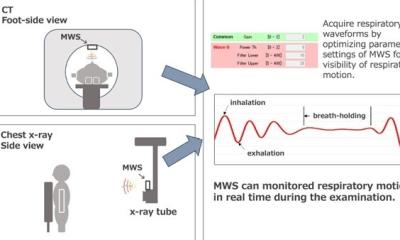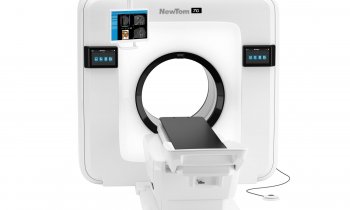Dose reduction in coronary CT angiography
Mature methods are making a difference
Several health insurers now flag patients who have either exceeded a radiation dose threshold or have had over five CT examinations to the most vulnerable body areas.
The FDA has suggested a ‘radiation dose card’, detailing medical radiation exposures, be carried by patients. However, whilst efforts have paid off to reduce radiation exposure during coronary CT angiography (CCTA), and a lower radiation dose is possible than in the commonly used nuclear stress test, education and training are still vital to establish uniform coronary CCTA scanning standards and lower doses to patients.
However, although CT equipment manufacturers have developed technology that, if used correctly, can significantly minimise dose, one of the main problems associated with excessive radiation exposure is operator unfamiliarity with dose-reduction protocols. ‘Whether a patient is imaged electively or in the emergency department, there shouldn’t be a lot of variation in radiation exposure,’ said John Lesser MD, of the Minneapolis Heart Institute. ‘With CCTA, you have to manipulate parameters to fit the patient. Differences arise because of a patient’s heart rate or size, or operator knowledge.’
Ideally, the CCTA dose should be the same or less than the more commonly used stress nuclear scan. ‘With earlier models of dual-isotope SPECT scanners, the radiation dose of a cardiac test can be as high as 24 mSv, while a SPECT sestamibi scan can be as high as 12 mSv. We should expect most cardiac CT scans to range between three and 12 mSv,’ he explained.
‘Diagnostic results obtained through a CCTA study far outweigh the slight risk of cancer development in later years,’ according to Jörg Hausleiter MD, at the University of Munich, Germany. ‘However, there are practical means of reducing radiation dose. With modern CT technologies, we will be able to reduce the dose into a range of approximately 5 mSv, or even lower.’
Protection 1
The Protection 1 trial, an international, prospective, multicentre study of which Hausleiter was lead investigator, involved 1,965 patients undergoing CCTA between February and December 2007 (JAMA 2009;301:500-507).
The researchers found that the median dose-length product (DLP) of patients was 885 mGy cm, which corresponds to an estimated radiation dose of 600 chest X-rays. They also observed a high variability in DLP between study sites (range of median DLPs per site, 331 to 2,146 mGy cm).
The authors wrote that the study ‘demonstrates that radiation exposure can be reduced substantially by uniformly applying the currently available strategies for dose reduction, but these strategies are used infrequently. An improved education of physicians and technologists performing CCTA on these dose-saving strategies might be considered to keep the radiation dose “as low as reasonably achievable” in every patient undergoing CCTA.’
Dose-reduction techniques
Some available methods to reduce CCTA radiation dose:
• Tube Current Modulation, a helical scan: ‘You administer a full programme dose to certain parts of the cycle, and then you administer a dose reduction of 20% for the rest of the cycle,’ Dr Lesser explained.
• Step-and-Shoot method; an axial scan. ‘It exposes without overlapping radiation from adjacent scanner detectors, and exposes a small segment of the cycle. This method also requires a very regular heartbeat and reduces radiation dose the most,’ he pointed out.
• Tube Voltage Reduction from the conventional 120 kV to 100 kV, which ‘…can be done very safely without losing diagnostic quality,’ added Dr Hausleiter.
With the new Siemens Definition Flash CT scanner ‘… the table feed goes very fast, which makes the dose miniscule,’ Dr Lesser pointed out, but it can only be employed when the heart rate is less than 60 bpm. Dr Hausleiter’s University of Munich is a test site for the Flash CT; he said dose is as low as 1 mSv.
In addition to newer methods, there also are larger detectors, beyond 64-slice, such as Toshiba America Medical Systems’ Aquilion 320-slice CT and Philips Healthcare’s Brilliance 256-slice CT, which perform the examination far quicker, resulting in less radiation and they do not require the physician to lower the heart rate, according to Kevin M Takakuwa MD, at Thomas Jefferson University Hospital in Philadelphia. However, he added, physicians need to be selective about which patients receive which technique, especially in regard to heart rate.
Triple rule-out controversy
Th e CT triple rule-out examination – testing for aortic dissection, pulmonary embolism and coronary artery disease in one scan – has received considerable criticism due to the potentially high radiation exposure to the patient. In fact, ‘one study estimated that the radiation emitted from a CT triple rule-out study is between 35 mSv and 50 mSv, which is an extraordinary amount of radiation,’ explained Dr Takakuwa. ‘We [at Thomas Jefferson] knew that estimation was too high, so we set out to quantify its actual radiation dose, and also to see if we could lower it to a number that could be safely and routinely used in patients.’ He and his colleagues discovered that employing the tube current modulation method halves the radiation dose exposure.
According to their results, among the 172 patients evaluated without tube current modulation, effective dose averaged 18 mSv. Of the 95 patients who underwent the examination with tube current modulation, effective dose was significantly lower at 8.75 mSv, and image quality was better compared with examination without tube current modulation (Am J Roent 2009;192:866-872). ‘There were no significant radiation differences by patient age, but tube current modulation decreased radiation exposure by at least half,’ they wrote. ‘Based on our findings, we believe the triple rule-out exam is an excellent test in an emergency department setting,’ Dr Takakuwa pointed out.
Addressing discrepancies
Protection 1 highlights the vast discrepancies of radiation dose with CCTA between sites. However, like many aspects of medicine, greater familiarity with the procedure leads to better, more consistent outcomes. Conversely, technologists and physicians who are unfamiliar with dose-reduction techniques could potentially compromise image quality and over-expose their patients. The most important components of reducing radiation dose in the CCTA setting are to reduce kV levels and manage the scan field to minimise overlap.
‘When Protection was published, we examined our methods and dose rates and re-evaluated our outcomes with each change,’ Dr Lesser said. At first, he and colleagues had a mean dose of 19 mSv. They adopted the MinDose method (reduced systolic tube current) and dropped the kV level. They then dropped kV further based on patient weight, and finally added step-and-shoot axial scanning. ‘We now are achieving a mean dose of 5 mSv for our coronary scans,’ he said.
Dr Hausleiter also encourages ‘feedback mechanisms for labs, so personnel can compare their performance to global benchmarks’. Participating sites in Protection 1 immediately changed protocols to reduce dose when they were informed that their exposure rates were above the median.
As more operators begin to employ techniques such as step-and-shoot and tube current modulation, and as more facilities adopt newer technologies, concern about radiation dose may begin to dissipate. ‘The discussion about radiation dose with CCTA, which is important right now, will disappear in a few years, because everyone will be employing these new effective methods,’ Dr Hausleiter concluded.
01.09.2009










